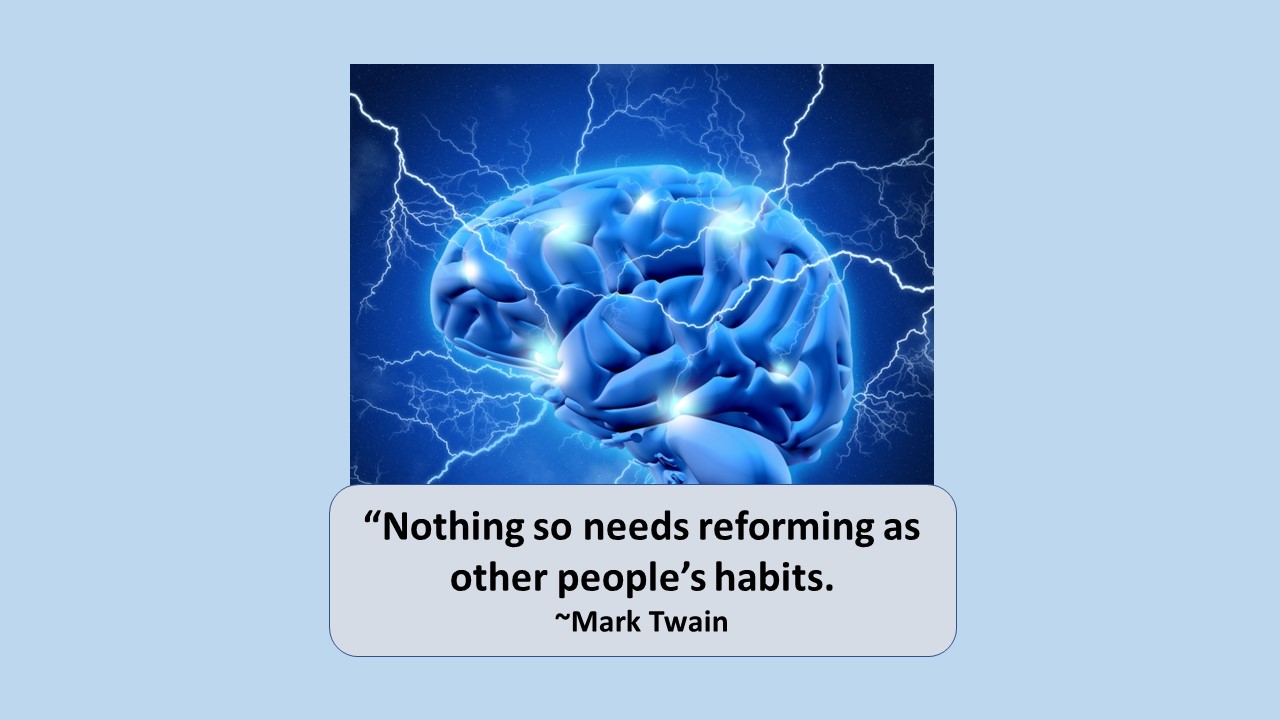By Thomas Davis, CRNA, MAE, Lt. Col (ret)
James finishes a busy day at work, gets in the car and heads home. While he’s driving, his mind is filled with a myriad of thoughts ranging from a recap of his workday to getting his 9-year-old to soccer practice on time. He pulls in to the driveway and realizes that he really doesn’t remember the drive home. His mind has been on auto-pilot and only his practiced habits got him home safely. What would have happened if the usual route had been closed for construction? His old habits would be in the ditch and his thinking mind would have needed to kick in quickly to figure out a new route for getting him home safely.
Jennifer is the head nurse of a busy 12-bed ICU. In addition to her clinical duties, she has two hours of office time built into her schedule dedicated to administrative obligations. Jennifer heads to her office and reflexively checks her email. Within seconds, she is distracted by an interesting message that stimulates her to do a quick google search…which leads to a second link; just that quickly, the two hours of office time have evaporated with nearly nothing to show for her time.
Driven by neural pathways that you have created in your brain, habits are a part of everyone’s daily life and can produce positive or negative results. Neural pathways are a series of networks of neurons in the brain that connect the different cerebral areas and become engrained when you repeat activities; the more you do it, the more your brain wants to do it. Activities such as a healthy diet, daily exercise, or collaborating with team members have a positive outcome and are healthy habits; however, habits such as Jennifer’s wasting office time while she is distracted by google can be career killers. Replacing unhealthy habits with innovative activities creates new neural pathways that will evolve into good habits and create a positive approach to boosting both your personal and professional life. Here are some tips for creating new neural pathways that will augment your personal journey to achievement.
Replace rather than remove
Most people recognize their counter-productive habits and would like to expunge them. Thoughts like, “I need to,” or “I wish I could stop,” acknowledge that a problem exists but “need” and “wish” do not offer a solution. Wishing that you could stop an activity keeps it fresh in your mind and, paradoxically, prods you to continue the habit. Instead of wishing it away, picture your life without the bad habit; then, identify specific activities to replace the behavior. Working to acquire a new activity is more motivating than ruing the negative effects of your current behavior. Jennifer could create a new habit by first visualizing several essential tasks she could accomplish, then limiting email to the last 15 min of her two-hour time block in order to complete the important tasks first.
Remind yourself of the goal
Look beyond your current behavior and focus on what you are trying to achieve. What is your goal and why is it important to you? Post reminders to keep you on track and visualize yourself successfully acquiring the new behavior. Imagine the feeling of satisfaction that you will experience when you develop the new habit and link the emotion to your goal.
Respond to every opportunity
The literature produced by the Neuroscience community varies regarding the number of times a new activity must be repeated in order for it to become a habit. Some researchers identify the magic number to be 60-80 repeats whereas others recommend repeating the activity frequently for 3-4 weeks. All scientists agree, however, that repeating the desired activity creates new neural pathway and, as new pathways are used, the old ones become less important, eventually disappearing altogether. For example, those who have recently quit smoking still have the activity in the back of their mind, whereas those who quit a decade ago, can barely remember that they were once smokers, or admit to it. Creating opportunities to use the new behavior reinforces the desired activity and increases the probability that it will become a habit.
Anticipate distractions
Once you have started modifying your behavior, temptations will emerge regularly. If you’ve committed to eating a healthy diet, someone is sure to show up with a baker’s dozen. Try to anticipate situations that may arise to create more hurdles to clear. Those who have problems completing projects, should turn off social media while working. If you run into road construction after work, have a second route in mind to keep your car out of the ditch!
Remain positive
Moving toward a new work habit can be motivating. Start and end each day by 1) bringing your goal to the front of your mind, 2) reviewing the behavior required to achieve it, and, 3) visualizing opportunities to repeat the necessary activity until it becomes a habit. By being persistent and keeping a positive attitude, you will achieve your goal.
Habits are vital, and we would have difficulty conducting our lives without them. Identify your current habits that are roadblocks to your success and then commit to replacing them by selecting behavior that is positive and productive; then repeat it until a new neural pathway is engrained in your brain and the activity becomes a habit. Whether you are planning an alternate route home or a more focused schedule for completing your daily work, neural pathways will take you to your destination.
Thomas Davis is a noted leader, educator, speaker and clinical anesthetist.
Build a preferred workplace. Join Tom and a group of healthcare leaders for the values-based leadership webinar. Click here for information.
